Making a reboot can’t be easy. In principle, you want to freshen things up but also pay tribute to franchise history. At the same time, this kind of “reset” is an ideal opportunity to remove elements of lore that are dated or problematic in some way.
So why is Lara Croft’s relationship with her father still so pivotal to the Tomb Raider movie reboot?
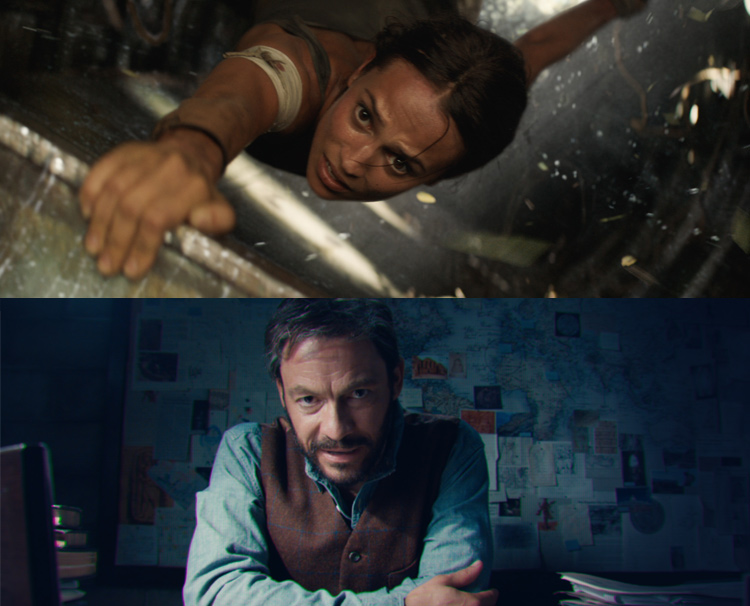
Sure, you shouldn’t judge a whole film by its trailers. However, watch Trailer 1 and Trailer 2 for the upcoming video game adaptation, and you’ll see how Richard Branson-esque Richard Croft (played by Dominic West) is presented as the key motivator for his daughter, Lara (Alicia Vikander), the movie’s protagonist.
For the record, this is Lara’s every line of dialogue in the trailers for the March 16 release.
Trailer 1:
“Lara… Croft.”
“Brilliant.”
“I promise.” [in response to a video recording where her father asks her to complete his mission] “I think I know where my dad went.”
“It will be an adventure.”
“What do you know about my father?”
“I’ll take two.”
Trailer 2:
“I thought I saw dad again. I think I’m going mad.”
“I think I know where my dad went.”
“It will be an adventure.”
“What do you know about my father?”
“He [my dad] had a knack for the unexpected.”
“Really?!”
“Put it down.”
“You messed with the wrong family.”
Someone has a bit of a daddy fixation, no?
In addition, the vast majority of conversations Lara has in the trailer centre on her father. Other characters, like Kristen Scott Thomas’s businesswoman Ana, and villainous rival archaeologist Mathias Vogel (Walton Goggins), only talk to Lara about her father, or compare her to him. The message comes through loud and clear in the second trailer that all Lara’s signature qualities – intelligence, recklessness – are inherited from her unconventional adventurer dad. Meanwhile, back in London, she is presented as aimless and unfocused, needing a channel for her restless energy. Fortunately, her deceased father is there to provide that purpose when he makes her swear, via video recording, to complete his world-saving work.
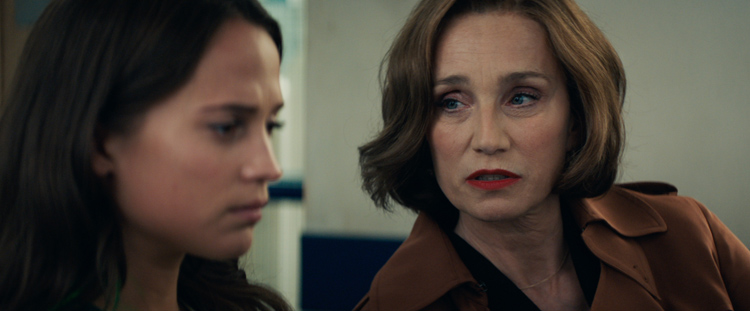
Lara Croft – arguably the most iconic female video game character of all time – is reduced to her father’s (admittedly ferocious) errand girl.
There is less than two months until we see how, and if, Lara asserts her own identity while completing her father’s mission. At this point it doesn’t look hopeful… although we know by the end of the movie she’ll have the character’s signature braid, mammoth inheritance and twin pistols.
The filmmakers behind Tomb Raider 2018 evidently went with the laziest and most overplayed character motivator known to man – the child following in a long-lost father’s footsteps. It also comes with an extra layer of “problematic” when this motivator is slapped on an immensely powerful female character. Like Lara Croft, the Tomb Raider.
Firstly, let’s clear something up: Daddy issues are a later addition to the Tomb Raider mix.
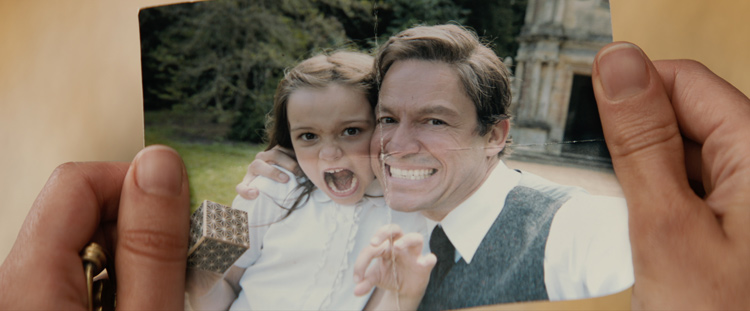
If you think that Lara Croft jumping into her father’s shoes is a crucial part of series lore, here’s a reminder of the character’s original backstory, as outlined in the 1996 game manual:
“Lara Croft, daughter of Lord Henshingly Croft, was raised to be an aristocrat from birth. After attending finishing school at the age of 21, Lara’s marriage into wealth has seemed assured, but on her way home from a skiing trip her chartered plane had crashed deep in the heart of the Himalayas. The only survivor, Lara learned how to depend on her wits to stay alive in hostile conditions a world away from her sheltered upbringing. 2 weeks later, when she walked into the village of Tokakeriby her experience had had a profound effect on her.Unable to stand the claustrophobic suffocating atmosphere of upper-class British society, she realised that she was only truly alive when she was travelling alone. Over the 8 following years she acquired an intimate knowledge of ancient civilizations across the globe. Her family disowned their prodigal daughter, and she turned to writing to fund her trips. Famed for discovering several ancient sites of profound archaeological interest she made a name for herself by publishing travel books and detailed journals of her exploits.”
Minus some tweaks – the Top Cow Tomb Raider comics insisted that 21 year old Lara lost her parents and her beloved fiancé in the plane crash – this origin story mostly held until Angelina Jolie’s Lara Croft: Tomb Raider came out in 2001.
Up to the release of that big screen adaptation, Lara’s motivations had nothing to do with her parents. In fact, she explicitly went against her family’s wishes, and they turned their back on her. Our daredevil heroine had the strength of resolve to reject convention – everything she knew – and set out alone to live life on her own terms. She didn’t mope over her rejection or crave parental affection. She got on with things, and she succeeded.
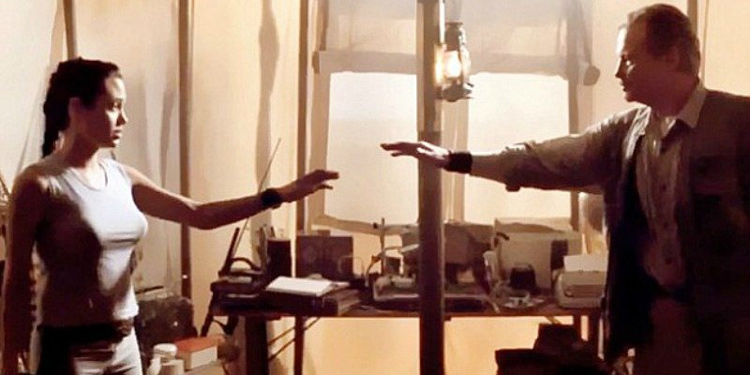
It’s unclear whether the script for Lara Croft: Tomb Raider was father-centric to begin with, or whether the casting of Angelina Jolie’s real-life father Jon Voight as Richard Croft led to a pumping up of that particular plot component. Either way, the movie made a big deal of Lara’s relationship with her deceased archaeologist dad. In fact, Croft Sr. drives the story as he leaves his daughter with a string of puzzles to solve, and a posthumous letter instructing her to find a powerful artefact before the Illuminati.
Swap out Trinity for the Illuminati, and a video recording for a letter, and you have vaguely the same plot for Tomb Raider 2018.
Anyway, back in the mid-2000s, when Crystal Dynamics took over Tomb Raider game development from Core Design, it became apparent that parental hang-ups had seeped into the franchise as a whole due to the Jolie movie. Lara’s new reworked origin story in the Legend-Anniversary-Underworld trilogy saw her raised by her archaeologist father after the mysterious disappearance of her mother post-plane crash (which Lara witnessed as a little girl). When Richard Croft vanishes too during Lara’s teens, she continues his work, delving into the truth behind myth and legend.
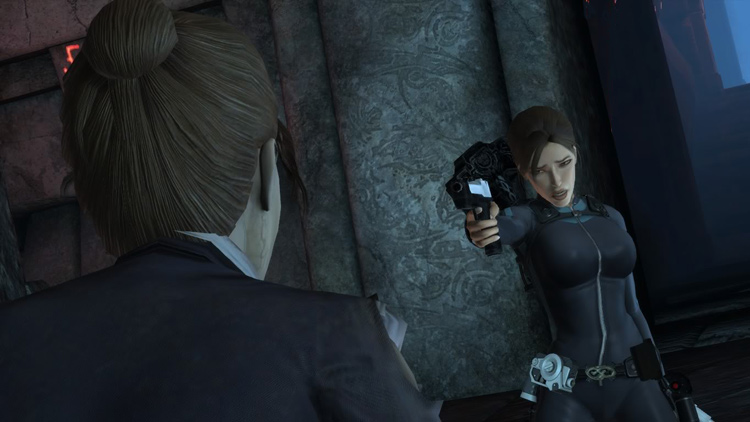
Although the fate of Amelia Croft, as opposed to Richard, was a far greater motivator for our heroine in this series, Lara still didn’t make the decision to become an archaeologist on her own. She simply picked up the family baton – or should that be trowel?
You may want to argue that this year’s movie is based primarily on Crystal Dynamics’ celebrated 2013 game reboot, and fidelity to that source material means Lara’s father must have a significant role. If this is your thinking, well, you’re misremembering that game.
In Tomb Raider 2013, Lara sails off to find the long-lost island of Yamatai and “make her mark.” She’s graduated university, on her first proper expedition and keen to establish her own professional reputation, far removed from that of her fringe archaeologist father, who was famously destroyed by his obsession with myth-as-reality.
It’s only at the very end of the game that Lara admits remorse over how she resented and doubted her dad, and stresses that he was right all along. At this point she commits to discovering the truth behind the world’s greatest mysteries. With that declaration, she could have gone off in her own direction. However, in Rise of the Tomb Raider it’s revealed that Lara has taken up her father’s controversial research – as a way to reconnect with him, and clear his name.
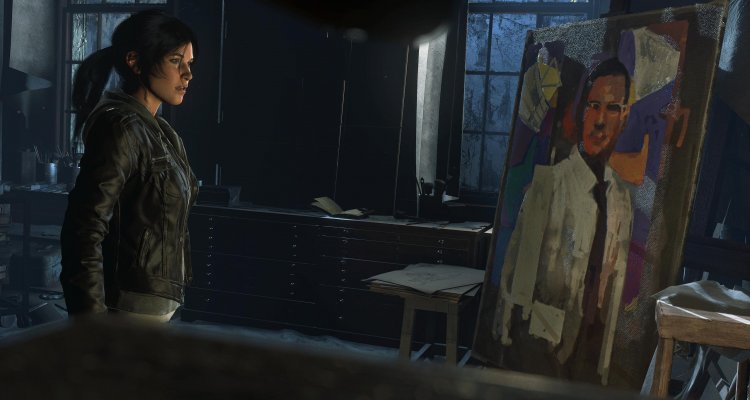
Post-Rise, in the comics (and presumably upcoming game sequel) Lara is fixated on uncovering Trinity’s role in her father’s fate. So, yeah, the daddy stuff is seeping back into the rebooted universe too. Although no longer involved in the franchise, games writer Rhianna Pratchett has publicly stated that if she knew the new Tomb Raider was going to veer back in a parental motivations direction, she would have pushed harder from the start for Amelia Croft to be the archaeologist in the family.
And before you say it, that simple change of gender does make a difference. Of course it would be better if the tired trope of parent-as-life-purpose-provider was retired, full-stop, but there is a very real problem when you take a female hero and put her in the shadow of a male character. It’s even worse when you take an iconic woman protagonist – already rare as hen’s teeth – and subject her to the same treatment.
Now if you’re someone who doesn’t want to know what goes into their beloved chicken nuggets, it’s probably a good idea to stop reading at this point. Because we’re about to initiate some deeper analysis of a big, probably quite dumb, video game movie.
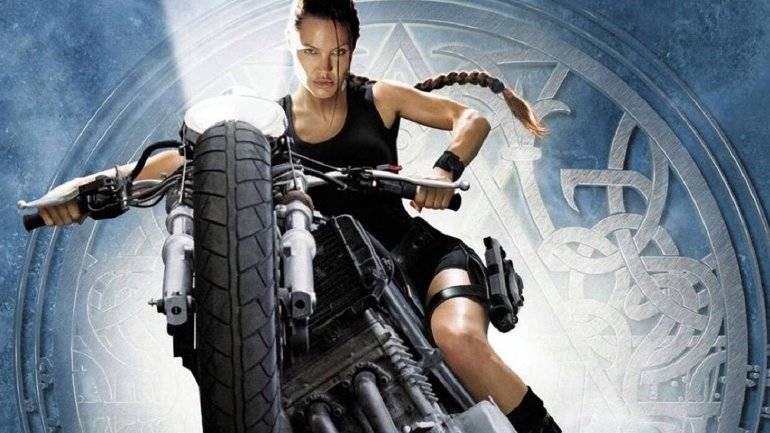
In 2001, with the release of Lara Croft: Tomb Raider, a fictional female icon suffered demotion and neutering. Lara Croft was stripped of her full agency by caging her in a sphere of male influence. She couldn’t be powerful simply because of who she was. She needed a masculine stamp of approval to explain and legitimise her hero status. She also needed a male character to give her direction because without it she sat bored and inert.
The “taming” of fierce, omnipotent women in this manner is nothing new. The Ancient Greeks with their patriarchal society and religious structure were quick to take the carry-over female deities from older matriarchal faiths and either brand them monsters (95% of monsters in Greek Mythology are female) or explain their might as stemming from male association.
Athena, patron goddess of cunning heroes, craftsmen, the city-state of Athens and a dozen other markers of Civilisation, was born fully formed from the head of Zeus, king of the Olympian gods. Zeus swallowed Athena’s mother so he could, in his own way, give birth to the greatly admired goddess. By contrast, when Zeus’s wife Hera attempted to have a child on her own, without male involvement, she gave birth to crippled blacksmith Hephaestus. Male creation, good; female creation, fundamentally broken.
Unsurprisingly, there was an uproar when another of Pop Culture’s great female icons, Wonder Woman, had her origin story changed in a “daddy direction”. During writer Brian Azzarello’s 2011-2014 run on the DC comic, the world’s first and most famous superheroine went from being a creation of clay, goddess blessing and a mother’s love (note the complete lack of male contribution) to the daughter of Zeus and Hippolyta. There had to be a guy in there somewhere to explain Diana’s abilities – to make her just a bit more safe, conventional and constrained. Who knows? Maybe for some people it’s reassuring to know that if these women do step out of line, there is a more powerful male figure above them in the hierarchy, ready to put them back in their place.
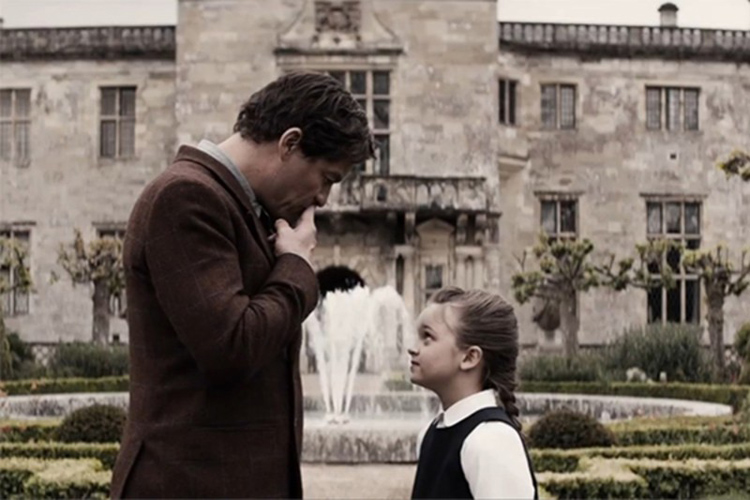
Returning to Tomb Raider, perhaps it’s for a similar reason that Lara Croft is a lone woman dropped into a sea of men. The games have always been more gender balanced, with Lara engaging with as many male and female allies as she does enemies of the different sexes. Hollywood, however, ensured the character didn’t interact with a single other woman over the course of two Noughties movies. The upcoming release looks the same, as Lara is stranded on Sausage Fest Island. The Lara-Ana conversations in the trailers are also instant Bechdel Test fails as the ladies only talk about Richard Croft, a man. For the record, Lara does have a female best friend and flatmate, Sophie (Hannah John-Kamen) in the movie, but as this aspect is AWOL from the trailers, we’ve yet to see what their interactions are like.
The point is that in surrounding Lara with men, and men alone, sub-consciously we’re being encouraged to believe our heroine’s exceptional nature – like Jyn Erso in Rogue One, and so many other sadly isolated female characters – stems from how she can out-man the men, either by leading or defeating them. Shooting rifles, flinging axes and leaping into the fray is coded as active, masculine and admirable.
But maybe everything we’ve seen of the new Tomb Raider film is all just a marketing miscalculation – like the years and years of misleading game advertising centred on monstrous mammaries. Maybe the promotional material for the film is laying on the father association so thick because a high-level film executive thinks audiences are so simple-minded they can’t process any motivation subtler than a boulder to the head. Maybe the same exec believes that all people remember of the Jolie movies is the Croft family angle, and wants to hammer home that association.
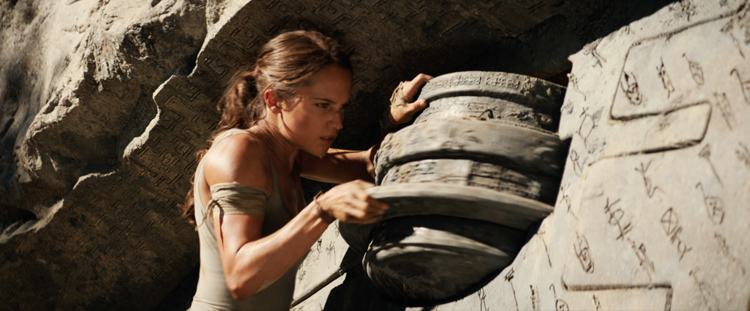
Still, reboots are a chance to redo and rectify, and right now it looks like Tomb Raider 2018 has disappointingly copied the biggest faux pas of its big screen predecessors. I hope the full movie proves me wrong – or, at the very least, flushes the daddy issues completely from its system like Tomb Raider 2001 did before sequel The Cradle of Life.
Let Lara Croft stand once more as her own person, in the light, as opposed to in her father’s shadow.
—
P.S. Friendly reminder it’s possible to enjoy something and still be aware of its failings. Criticism needn’t be condemnation.
The views and opinions expressed in this article are those of the author(s) and do not necessarily reflect the official policy or position of Critical Hit as an organisation.
Last Updated: January 26, 2018




















